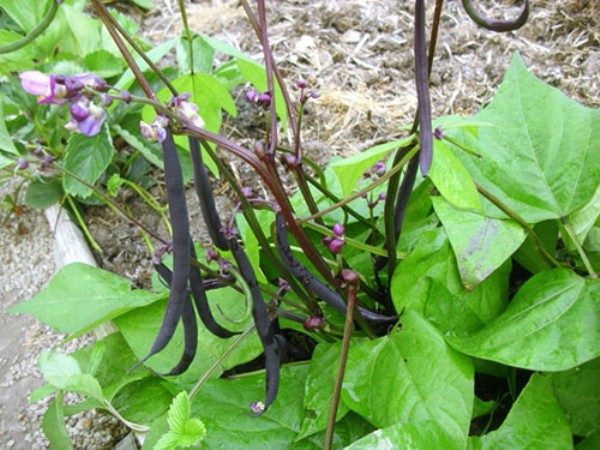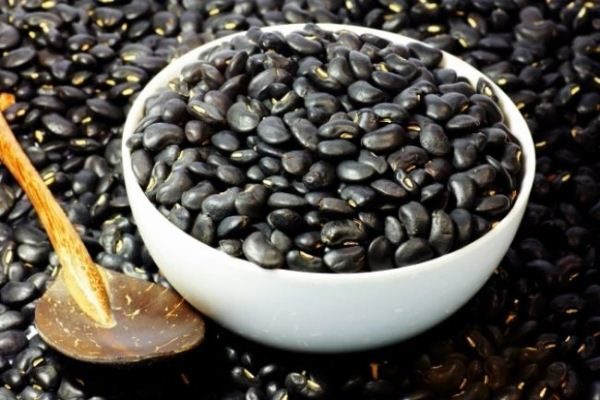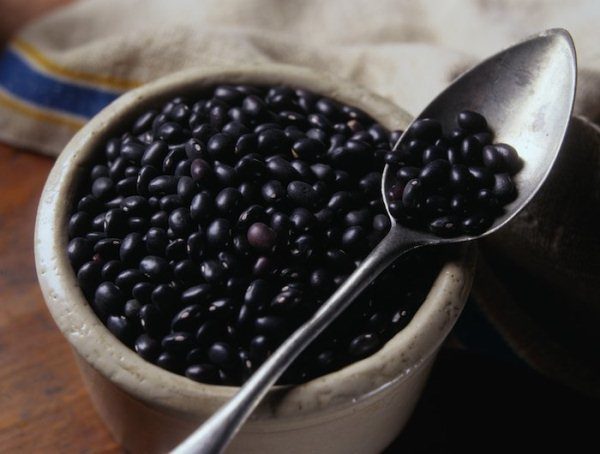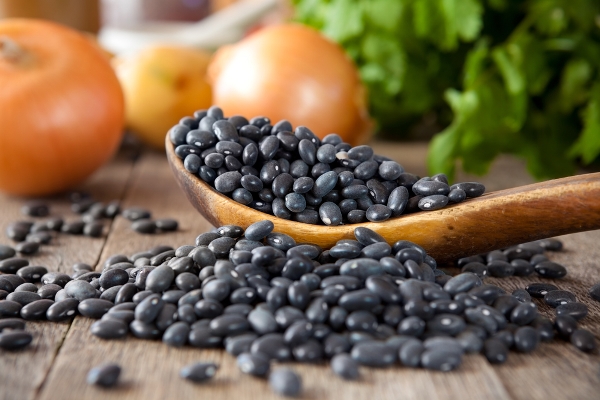Bean plants, which are known to man today, number nearly ninety species. Black beans are considered to be a unique, but not widespread legume. Its useful and harmful qualities are somewhat different from the known varieties, but in terms of nutritional and medicinal qualities such a plant is recommended for use. Let's take a closer look at this legume representative, what benefits and harms such beans bring to the human body.
Table of contents
Description and characteristics of black beans
At first, this plant was grown by the Romans, Egyptians and Chinese, but more than two hundred years ago it came to our territory, having traveled a long way from South America through France. Today, residents of Brazil and Mexico continue to use it as the main ingredient of their diet. But if you think about it, then this role of black beans fits best, because it is considered the most nutritious variety.

Both the pods and their contents are painted black. At first glance it may even seem that they are just dirty or tarnished by some disease. The size of the grains is influenced by the cultivation conditions and a certain variety. There are those that are the largest among the legumes.
Bean grain silky black, the structure is dense. They taste slightly sweet, give a hint of smoked meat, which is considered a special business card of this plant. In cooking, black beans are beautifully used as an additive to meat and fish dishes, in soups, served with baked or roasted vegetables.
Beneficial features
The plant is distinguished by a record calorie indicator, when compared with other bean varieties. One hundred grams of product accounts for 314 kcal, which is almost sixty more than in red. The main nutrients are proteins, fats and carbohydrates. In addition, the beans contain a lot of fiber, and if a day to eat one hundred and forty grams of the product, you can freely fill the need for dietary fiber.

It affects the plant and the level of trace elements. The entire list consists of twenty-three items, the main ones are:
- zinc;
- iron;
- magnesium;
- potassium;
- phosphorus.
Some metals belong to the group of heavy, and are capable of harming the body, for this reason the product before use is subjected to serious heat treatmentto digest all toxic substances. This reduces three times the caloric content and the content of useful components.
Present in beans and amino acids, whose role in health and longevity cannot be overestimated.They help to update tissues, maintain stability in the metabolism of proteins and carbohydrates, hinder the development of oncology.

Useful components contained in beans, affect the entire body, not limited to certain of its systems:
- potassium helps against various puffiness, strengthens blood vessels, reduces the load on the heart;
- women are very useful beans so that it contains vitamin group B It is considered a source for beauty and youth. In combination with other vitamins and mineral components, their anti-aging properties appear quite strongly - they improve tone, remove toxins, give a healthy appearance to the skin and nails, normalize the nervous system;
- beans helps to cleanse the body of slag accumulations, removes cholesterol from blood vessels, dissolves kidney stones;
- participates in blood coagulation;
- with regular use of the product brain function improvesslowing the aging process.
Beans are considered a good helper in the battle with overweight and obesity. But before using it, it is still recommended to consult with doctors.
Harm and contraindications for use
With all its positive virtues, the plant can also have a harmful effect on the body. Such beans are considered the most high-calorie and heavy product for digestion, so it should not be consumed by intestinal colic, ulcers, gout and increased stomach acidity. Another contraindication is an allergenic effect on people with individual intolerance.
Use in traditional medicine
To lower blood sugar levels, It is recommended to take infusions and decoctions, made on the basis of bean sashes. High quality protein, thus entering the body, is involved in the construction of insulin.

Besides, Infusions are excellent in anti-inflammatory and antirheumatic drugs. are diuretic compounds that can reduce pressure in the arteries and dissolve stones in the bladder and kidneys.
Use during pregnancy and lactation
Often, legumes are excluded from the list of recommended vegetables while breastfeeding due to the fact that they can cause colic and bloating of the baby’s tummy. But the beans while continuing to be considered a nutritional product that can even increase the amount of breast milk. And if this vegetable is introduced into the diet correctly, you can significantly diversify the nutrition of a woman and enrich her milk with useful vitamin formulations.
In addition, the salt contained in the beans and useful trace elements will help to stabilize the reproductive system of a nursing mother, will have a general strengthening on the entire body.
Beans Recipes
Preparation of infusions
- bean sash grind in a coffee grinder into powder. 50 g of it is poured with boiling water (400 ml), infused overnight in a thermos. Take the necessary twenty minutes before a meal in half a glass;
- powdered sash in the amount of three spoons pour cold water (1 liter), insist eight hours, filtered. Before meals take one glass.
Decoctions
- spoon a powder of bean sashes pour a glass of boiling water, twenty minutes boil in a water bath.Broth should be cooled, strain and squeeze. Reception lead three times a day, three spoons;
- a kilogram of bean sash is boiled in three liters of water, is filtered. It should be eaten on an empty stomach for a long time, one glass each.
Such beans can be grown on the plot. It is recommended to use the Kindi variety, which is characterized by a black tint and a sweet aftertaste. with the presence of a little bitterness. To keep the beans for a long time, it should be dried, spreading on sheets and placed in a dry room with good ventilation. Further storage is carried out in cans or fabric bags.
